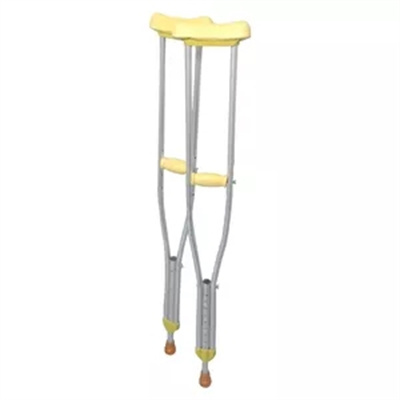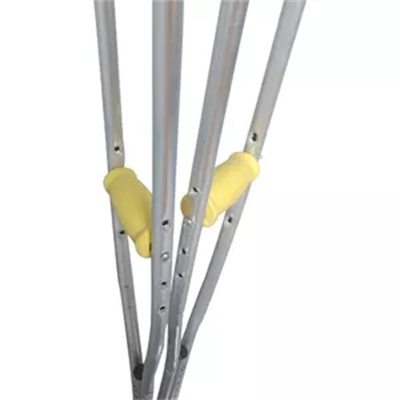1. Measure and Select the Right Size:
- Before purchasing crutches, measure your height to determine the correct size. Stand up straight, and have someone measure the distance from your armpit to the floor. The top of your crutch, when adjusted, should be about 1-2 inches below your armpit.
2. Ensure Proper Handgrip Height:
- The handgrips should be at a height where your elbows are slightly bent when you hold them. To adjust the handgrip height:
- Loosen the adjustment mechanism (usually a wingnut or a clip).
- Slide the handgrips up or down to the desired height.
- Tighten the adjustment mechanism securely to hold the handgrips in place.
3. Check Underarm Support Height:
- For underarm (axillary) crutches, the underarm supports (also known as axillary supports) should sit just below your armpits without touching them. To adjust the underarm support height:
- Loosen the adjustment mechanism.
- Slide the underarm supports up or down to the correct position.
- Securely tighten the adjustment mechanism.
4. Verify Crutch Stability:
- Ensure that all components of the crutches are securely attached, and there is no wobbling or instability. Loose or damaged parts can lead to accidents.
5. Check Handgrip Angle:
- Some crutches have adjustable handgrip angles to accommodate individual comfort. Adjust the handgrip angle to a position that feels natural for your wrists and hands.
6. Properly Position the Crutch Tips:
- The crutch tips (also known as ferrules) should be flat on the ground and not worn or damaged. Adjust the crutch tips so they provide good traction. Replace them if they are worn out.
7. Ensure Proper Weight Distribution:
- When using crutches, distribute your weight evenly between both crutches and your unaffected leg to maintain balance and stability.
8. Practice Walking Technique:
- Learn the correct crutch-walking technique from a healthcare provider or physical therapist to ensure you use your crutches safely and effectively.
9. Regularly Inspect Crutches:
- Periodically check your crutches for signs of wear, damage, or loose parts. Replace any worn or damaged components promptly.
10. Follow Healthcare Provider’s Guidance: – Adhere to any specific instructions or recommendations provided by your healthcare provider or physical therapist regarding crutch fit and adjustment.
11. Gradual Adaptation: – It may take some time to get used to using crutches. Be patient and practice regularly to become comfortable and confident with your mobility aid.
12. Seek Professional Assistance: – If you have difficulty adjusting your crutches or if you experience discomfort or pain while using them, consult with a healthcare provider or physical therapist for assistance and adjustments.
Properly fitted and adjusted crutches are crucial for your safety and mobility during your recovery or while dealing with mobility limitations. Regular maintenance and attention to detail will help ensure that your crutches serve you effectively.




















